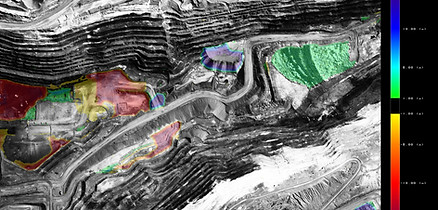

Terrain Algorithms and Products
Core Products
The following windows detail the Precision Terrain digital surface model (DSM) product that Anthony developed while at Lockheed Martin.
Areal Rendering

Areal rendering augments a DSM or DTM product using areals (area-based polygons) of building locations to artificially insert buildings into the surface model.
Areal Sharpening

Areal sharpening is the process of using areals of building locations to refine building footprints that are automatically derived while generating the DSM.
Road Smoothing

Road smoothing uses areals or vector-based polylines to define the locations of roads in the DSM. This algorithm then flattens and smooths the road surfaces to better simulation actual road conditions in the DSM.
Water Flattening

Water flattening uses areals from open sources to define the littoral boundaries of any significant bodies of water in the DSM and flatten them to a uniform elevation.
Advanced Terrain Analysis
The following algorithms and products depict some of the analysis algorithms that can be generated using this Precision Terrain or comparable DSM products. These may also be used with higher resolution products like LiDAR.
Slope Analysis

This algorithm evaluates the profile of the DSM to indicate the steepness of slopes in the geographic area. This information can be used for tasks such as evaluating terrain traversal, probability of avalanche, or levy collapse.




_Small.jpg)




